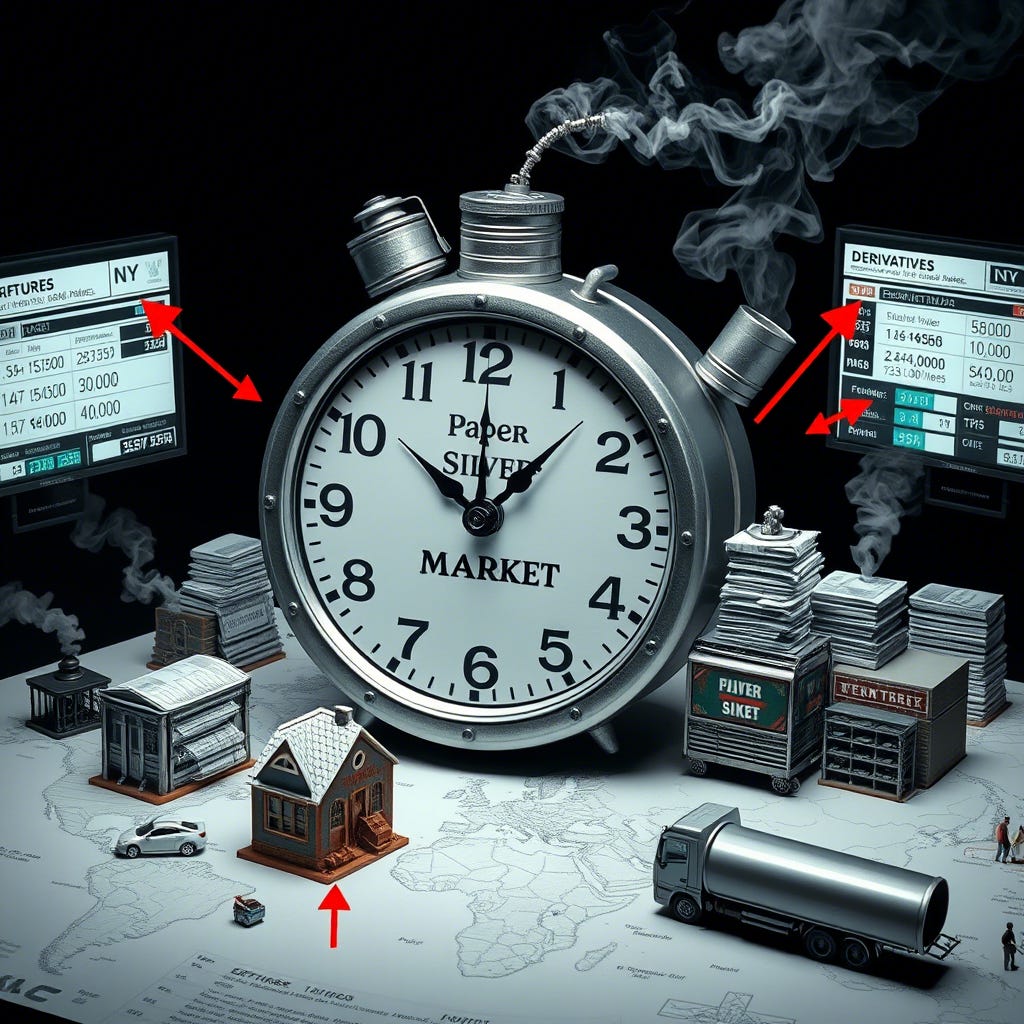Silver's New Ascent: Why the Rally Past $34 Is Just the Beginning
Silver is no longer playing second fiddle.
In June 2025, the price of silver has decisively held above $34 per ounce, marking its highest sustained level since 2012. The precious metal has surged approximately 18% year-to-date, outpacing both the S&P 500 and Bitcoin, and sending a strong message: silver is back—and perhaps stronger than ever.
At the Mining Investment Event of the North in Quebec City, Phil Baker, former CEO of Hecla Mining and current executive committee member of the Silver Institute, delivered a powerful outlook in an exclusive Kitco News interview. Far from calling this a top, Baker believes this rally is only getting started—and he has the data to back it up.
An Unseen Structural Deficit
At the heart of Baker’s thesis lies a severe and persistent supply deficit. Over the past four years, more than 800 million ounces of silver have been drawn from above-ground stocks—an unsustainable drain when considering that annual global production remains stuck around 800 million ounces.
Production peaked in 2016 at 900 million ounces, and since then, the supply pipeline has failed to keep pace. “Nothing’s going to change that,” said Baker. “The largest silver mine in the world is actually a copper mine, and even that only produces about 41 million ounces annually.”
The supply squeeze is compounded by a lack of new major mining projects. It takes 15–30 years to bring a new mine from discovery to production. In the meantime, recycling, the only secondary source of silver, contributes just 150 to 190 million ounces per year, and has not grown meaningfully in over a decade.
Rising Demand From East and West
While supply stagnates, demand is quietly exploding, especially in emerging markets.
In India, silver consumption is largely physical—driven by cultural uses in jewelry, art, and ornate silverware. With 25% of India’s population under the age of 14 and an expanding middle class, Baker expects silver demand to grow exponentially. India already consumes about 19% of the world’s silver, despite producing only 18 million ounces per year.
Meanwhile, China’s demand is industrial, tied to electronics and especially solar energy. The country’s net silver imports have surged 80% year-over-year in Q1 2025, reflecting restocking efforts and robust internal demand despite ongoing geopolitical trade tensions. “They slowed down solar temporarily, but now they’re restocking, and it’s back online,” Baker noted.
These twin engines—India’s physical consumption and China’s industrial buildout—are becoming a global force.
$50 Silver? Not So Far-Fetched
Could silver really surpass $50 in 2025? Baker thinks it’s possible.
“If we see a major geopolitical event—a war, a financial shock—silver could spike dramatically,” he said. “But even without that, the supply-demand fundamentals alone suggest a long-term rise.”
He believes today’s price levels are still undervalued, especially considering that gold has surged 26% year-to-date, hitting a new all-time high near $3,500. The gold-silver ratio, now sitting around 100:1, indicates silver is significantly lagging and may have much more room to run.
Fragile Paper Market: A Time Bomb?
One of the least discussed—but potentially most explosive—drivers of a silver price spike is the fragility of the paper silver market.
Baker warns that far more silver is traded on paper (through futures and derivatives) than physically exists. “At some point, people will demand the real metal,” he said. “And when that happens, the market could break. You’ll get a squeeze, and the price will go vertical.”
These stresses are already beginning to show, with logistics issues causing price dislocations between U.S. and U.K. markets, and anecdotal evidence of physical shortages in retail supply chains.
A Bull Market 24 Years in the Making
Despite its slow-and-steady reputation, silver has been in a secular bull market since 2001—fueled first by industrial innovation, and more recently by growing monetary demand.
The collapse of photographic silver demand in the early 2000s once weighed on the metal. But that void has been more than filled by sectors like solar, EVs, semiconductors, and electronics. Today, silver is no longer just a commodity—it's a strategic metal at the heart of the green energy transition.
Retail Reawakens: A Generational Shift
Retail interest is quietly booming. Surprisingly, many new silver buyers are under the age of 40. Baker cited internal reports showing increased purchases at big-box retailers like Costco, where silver coins have become a popular long-term hedge.
Unlike gold, silver’s lower price point makes it an accessible inflation hedge, especially in regions where wage growth hasn’t kept up with currency debasement. “People can’t buy what they used to for $20. That’s what’s driving them to silver,” said Baker.
From American households to Indian weddings, the metal’s appeal is both global and generational.
Looking Ahead: A New Era for Silver
Phil Baker’s parting message is clear: “The world doesn’t realize it yet, but silver is in a new phase of demand growth—especially from clean technologies.”
With solar power expansion, electric vehicles, and industrial automation poised for continued acceleration, and a decade-long lag in mine development, silver’s fundamentals suggest a perfect storm.
Whether prices surge to $40 or $50 this year remains uncertain. But one thing is becoming more likely: silver’s time in the spotlight has just begun.












Fascinating article—Baker makes a compelling case for a structural shift in silver’s role from a forgotten metal to a strategic asset. If silver demand is accelerating but mine development takes 15–30 years, what kind of short- to mid-term strategies are mining companies realistically pursuing to bridge that gap without overextending capital?